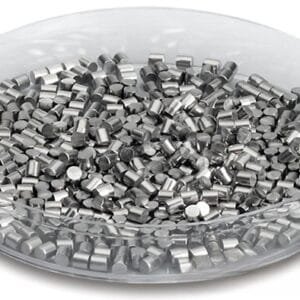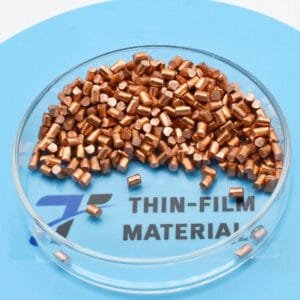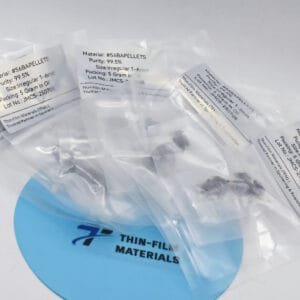Silicon Disulfide Evaporation Materials Overview
TFM offers high-quality silicon disulfide evaporation materials, characterized by their chemical formula SiS₂. This sulfide ceramic material is crucial for achieving high-quality deposited films in various deposition processes. With a commitment to quality, TFM provides silicon disulfide materials with purity levels reaching up to 99.9995%, ensuring consistent and reliable performance.
Silicon Disulfide Evaporation Materials Specification
| Material Type | Silicon Disulfide |
| Symbol | SiS2 |
| Appearance/Color | White Solid |
| Melting Point | 1,090 °C (1,990 °F; 1,360 K) sublimes |
| Density | 1.853 g/cm3 |
| Purity | 99.5% ~ 99.9% |
| Shape | Powder/ Granule/ Custom-made |
Applications
Silicon disulfide evaporation materials are integral to several deposition processes, including:
- Semiconductor Deposition
- Chemical Vapor Deposition (CVD)
- Physical Vapor Deposition (PVD)
They are predominantly used in optics for:
- Wear Protection
- Decorative Coatings
- Displays
Packaging and Handling
Our silicon disulfide evaporation materials are carefully packaged and clearly labeled to ensure proper identification and quality control. We take extensive precautions to prevent any damage during storage and transportation, guaranteeing the integrity of the material upon delivery.
Contact Us
For inquiries regarding high-purity silicon disulfide evaporation materials, including various shapes such as tablets, granules, rods, and wires, please reach out to TFM. We also offer customized forms and quantities tailored to your requirements. Additionally, TFM provides a range of evaporation sources, boats, filaments, crucibles, heaters, and e-beam crucible liners. Contact us for current pricing and further details.

 MSDS File
MSDS File



Reviews
There are no reviews yet.